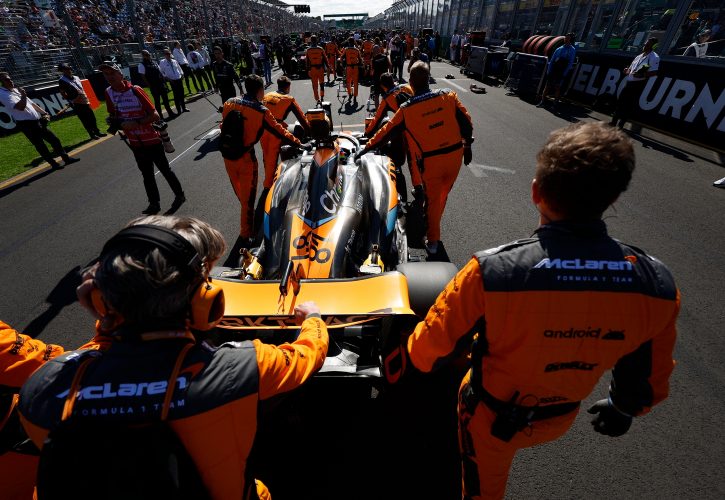
McLaren team principal Andrea Stella says the team's new three-way management structure of its technical department has nothing in common with the similar but "confusing" arrangement used by the team in 2015.
Last month, McLaren announced the exit of technical director James Key and the creation of a three-pronged management structure that features three technical directors -- Peter Prodromou (aerodynamics), Davide Sanchez (car concept and performance), and Neil Houldey (engineering and design) -- who will all answer to McLaren team principal Andrea Stella.
The move, put together by Stella following a demand by McLaren Racing boss Zak Brown, aims to bring the team’s technical prowess in line with its sporting ambitions.
But back in 2015, McLaren also relied on a three-way format for its technical department, with Tim Goss, Matt Morris and Peter Prodromou all working alongside each other, with little benefit for the team unfortunately

Stella insists that McLaren's new arrangement is very different from the "confusing" three-pronged approach used by the team eight years ago.
"I think the only common thing in that organisation and this one is the number three," he said, quoted by motorsport.com.
"The rest is completely different. At the time, which is when I joined McLaren in 2015, there were three technical directors. I think the separation of competence was very confusing.
"Even for internal people, it was quite difficult to understand, like who was doing what. And the first difference is that now we know exactly what the criteria are for this separation.
Read also:
"We want in the structure that we have deployed to have clear leadership in relation to the three fundamental areas to make quick cars in modern F1, which is aerodynamics, car concept, and engineering.
"So we wanted to have this model clearly in place as a way of answering the question that Zak and I have shared right from day one, in my role as team principal: how do we create a performance-led organisation?
"It needed an approach from a modelling point of view to the F1 team.
"The first difference is that, at the time, the technical structure was quite undefined as to who was doing what."

Stella points to the clarity of each TD's responsibilities as the main differentiator between today's model and the one relied upon in 2015.
But the Italian also notes that McLaren's technical headmen will also be answering to a team principal who is first and foremost an engineer.
"Now we have a clear underlying model of the team, and more specifically, the technical area," he said.
"In addition to that, at the time, this technical group was reporting to the team principal, who was not technical. Now we have a technical team principal. But I don't expect to be very busy in relation to managing our technical department.
"Because first of all, like I say, we have very strong leaders in each area. And ultimately, what's important is that we bring to the table performance ideas, that's what we miss the most at McLaren right now.
"And when it comes to making decisions most of the time it is a simple, natural derivation of coming to the table with elaborate and high-quality information."
Keep up to date with all the F1 news via Facebook and Twitter







